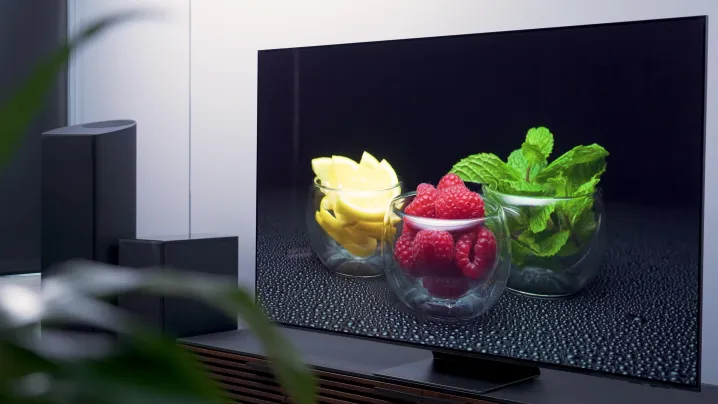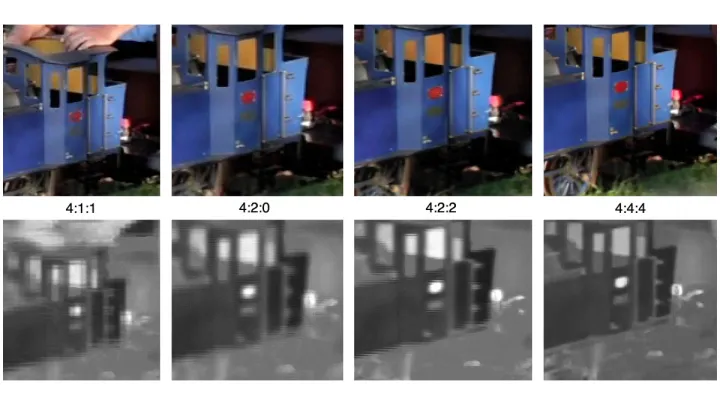Chroma subsampling is one of the most effective ways to watch high resolution, high refresh rate content without the massive bandwidth that’s needed to transmit such signals. Like display stream compression, chroma subsampling is a compression technique that when used effectively, is almost indistinguishable from the native image.
It works by removing some of the color information from the picture or video, whilst retaining all the luminance, or brightness information. It reduces bandwidth, opening up more space for higher resolution and refresh rate signals. This makes higher refresh rate UHD monitors possible, and it’s a technology that without, platforms like Disney+ and Netflix just wouldn’t work as well.

What is chroma subsampling?
Chroma subsampling a signal removes some of the color information from the image or video, whilst retaining information related to brightness. This reduces the overall bandwidth required to transmit the signal, whilst not visually affecting the eventual image to a great extent. Unlike Display Stream Compression, which is visually lossless, chroma subsampling does produce artifacts on occasion, though it’s typically hard to spot unless you’re looking for it.
Indeed the reason chroma subsampling is so effective, and is so widely used, is because of a trick of the human eye. While humans are excellent at spotting contrast — that is the difference between light and dark — they aren’t as good at spotting a difference in color. That’s why in chroma subsampled images and video, the full luminance data is transmitted, but the color data is restricted. Although this does reduce the variance in color within an image, it’s very hard for even trained eyes to spot unless they’re really looking for it.
That’s why most movies are broadcast with chroma subsampling utilized on all major streaming platforms, and it’s even used with UHD Blu-rays, which are largely considered the highest quality way to watch movies.

The above image shows just how little difference there is when removing large portions of the color resolution with more extreme chroma subsampling techniques.
How does chroma subsampling work?
A standard video signal has two main components: luminance information, and color information. Completely uncompressed, such a signal is termed 4:4:4, where every pixel has its own set of chrominance (color) values. This is the highest possible quality for a video, with no subsampling in place.
A marginally compressed signal is termed 4:2:2, which has color information for every other pixel, with those other pixels copying the color information from their neighbors. So in a two by two block of pixels, each pixel has its own luminance data, while each group of two shares the color data. This is often used in professional video editing, where it reduces the data rate without impacting the visual quality at all.
Broadcasting, streaming, and UHD Blu-rays use a more aggressive chroma subsampling of 4:2:0, where there is only one pixel with color data every four pixels. A block of two by two pixels would have luminance data for each pixel, but share the color data across all of them. While this sounds dramatic (and the effect it has on bandwidth is dramatic) the end result is still almost impossible to distinguish from 4:2:2, or 4:4:4.
Chroma subsampling is typically not enabled by default on PC monitors, because it can cause problems with the legibility of small text — something that’s much more readily viewed on monitors than TVs.
Should you use chroma subsampling?
Chroma subsampling is one of several compression techniques that can be used to reduce the overall bandwidth required to transmit video. For consumers, DSC has largely taken the place of chroma subsampling, as it is entirely visually lossless and unlocks the kind of additional bandwidth necessary for high refresh rates and resolutions.
That’s not to say that chroma subsampling is redundant, though. Indeed, it’s still a major component in the functionality of modern streaming services, and modern UHD Blu-rays, which take advantage of it to store the masses of chroma and luminance data required for 4K resolution video.
Chroma subsampling is still handy when using older displays that don’t support DSC. It’s also a major component of some static image algorithms, like the way JPEGs are made.
Suffice to say, chroma subsampling can still be useful and is used regularly by various industries and in niche settings. For general consumers, however, DSC is arguably a more effective compression system. It’s far more modern and you’re more likely to find that enabled by default in cases where you could use it, so you shouldn’t need to use chroma subsampling manually.
Editors’ Recommendations
Services Marketplace – Listings, Bookings & Reviews